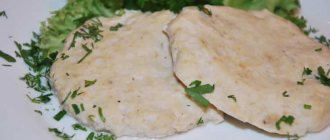“Sausage” - in more detail:
- Pork sausage
- Cooked pork sausage
- Minced pork sausage
- Grilled pork sausage
- Fried pork sausage
- Pork sausages
- Pork sausages
- Breakfast sausages
- Pork sausages
- Chicken sausages
- Fried pork sausage
- Grilled pork sausage
- Cooked pork sausage
Varieties of IGP and DOP categories
Many people love salami, and therefore they produce it in most civilized countries of the world. But, as you know, sausage is different from sausage, and in order to appreciate the original taste, you definitely need to go to its homeland - Italy. There are also a huge number of manufacturers in the republic. However, only some products are awarded special marks - IGP or DOP categories. These abbreviations in the name indicate dedication to the tradition of production and high quality of Italian salami.
Salama da sugo IGP
Salami da sugo is a sausage typical of the province of Ferrara, but completely unusual in appearance. It contains pork meat, tongue and liver, wine, salt and spices (nutmeg, cloves, cinnamon, pepper). It is shaped like a melon and tied with twine. May be covered with a coating of white mold that appears naturally during ripening. The weight of the heads ranges from 0.7 to 1.4 kg. The color is dark brown, the aroma is intense, the structure is soft and grainy. Minimum aging period 6 months.
The peculiarity of salami da sugo is that it is most often additionally prepared before use. Soak in cold water to soften the plaque, carefully wash with brushes, and then cook for at least 4 hours. It is important that the skin of the sausage is not damaged. The finished product is eaten warm with potato or pumpkin puree, cut into portions.
Salame Cremona IGP
Cremona salami is made from pigs raised in the area where Parma ham (Prosciutto di Parma) and Prosciutto di San Daniele are produced. It is a mixture of fresh pork with salt and crushed garlic, stuffed into the intestines of pigs, cattle, sheep or horses.
Ripening period from 5 weeks to more than 4 months. Salami has the shape of a cylinder with a diameter of 65 mm and a length of 150 mm. The weight of the finished product is 500 g. The sausage is cut softly even after long-term aging. The color is intensely red, the aroma is rich, the taste is spicy. Cremona goes well with vegetables, fruits, breads and cheeses.
Salame d'Oca di Mortara IGP
Salami di Mortara is produced in the province of Pavia. It is prepared from pork and goose meat. In the last 3 months of life, geese should eat exclusively green food and grain and weigh at least 4 kg before slaughter. The casing for the sausage is goose skin. The texture is uniform and does not crumble. The cut color is dark red interspersed with fat. The smell is spicy, the taste is delicate and soft. The size of the sausage ranges from 0.3 to 4 kg. Salami di Mortara goes well with fresh and stewed vegetables.
Salame Sant'Angelo IGP
Salami Sant'Angelo is a sausage made from pigs raised in Nebrodi. It has an elongated cylindrical shape and a natural white coating. The consistency is delicate and compact. The color of the meat is ruby red, the fat is white. The smell is delicate, the taste is spicy, aromatic, obtained due to the special microclimate of the valley. The holding time ranges from 30 to 90 days. The size of fat inclusions is larger compared to other varieties. Salami Sant'Angelo is eaten as an appetizer or an aperitif for alcoholic drinks.
Salame Felino IGP
Salami Felino is a product from the city of the same name in the province of Parma. In addition to meat and spices, the sausage contains dry white wine, which distinguishes it from other varieties. The weight of the sausage stick varies from 0.2 to 4.5 kg, the shape is cylindrical. The texture is compact, not elastic. The color is ruby red. The aroma is delicate, the taste is sweet. The minimum ripening time is 25 days. The size of the slices is very important for consumption. Traditionally, Felino salami is cut quite thick (7 mm) and long (the cut is made diagonally). It is served in combination with bread and Parma ham.
Salame Piemonte IGP
The Piedmontese salami production area is limited to the territory of the region of the same name. In addition to seasonings, the sausage is flavored with red wines from Piedmont made from Nebiollo, Barbera and Dolcetto grapes. The salami stick has a cylindrical shape and weighs at least 300 g. The cut is ruby red, the texture is compact and uniform, interspersed with lard and pepper grains. The taste is sweet and delicate due to the short aging (10-50 days depending on weight). Piedmontese salami has the aroma of aged wine and garlic. Slice it just before serving. Eat with fresh bread, mustard, cheeses and salads. Sausage is also served with various cereals and mashed potatoes.
Salame di Varzi DOP
Salami di Varzi comes from the municipality of Varzi in the province of Pavia. Sausage is a mixture of fresh meat and coarsely cut lard. The fat content is approximately 30-33% of the total weight of the product. The shape of the product is cylindrical, the cut color is bright red with white inclusions of lard. The consistency is elastic, the texture is compact. Aging time depends on weight and variety: Varzi-Filzetta (0.5-0.7 kg, aged 45 days), Varzi-Filzettone (0.5-1 kg, aged 60 days), Varzi-Sottocrespone (1-2 kg , ripening 120 days), Varzi-Cucito (1-2 kg, ripening 180 days). The taste is sweet and delicate. Salami di Varzi is cut into thick slices and complemented with vegetable salads with vegetable oil, cheeses and wines.
Salame Brianza DOP
Salami Brianza is made from pigs raised in the regions of Emilia-Romagna, Lombardia and Piedmont. In addition to salt, pepper, garlic and wine, sugar can be added to the product. The shape is cylindrical, the consistency is compact and not elastic. The cut color is ruby red. The smell is delicate, the taste is very sweet. Ripening time depends on size and varies from 15 days to more than 5 months. Salami Brianza is served as an appetizer with alcoholic drinks. It is used in many recipes.
For example, the salad that we call “Olivier” is called “Russian salad” (Insalata Russa) in Italy and they put salami in it.
Salame Piacentino DOP
Piacentino salami is made from the meat and fat of pigs in the province of Piacenza. The fat content is from 10 to 30%. The finished product has a cylindrical shape and weighs from 400 g to 1 kg. The texture is compact. The cut color is bright red with clearly visible inclusions of fat. The smell is characterized by a delicate aroma of meat with a slight hint of spice. The taste is delicate, almost unsweetened, becoming more intense with age. Exposure depends on weight and is at least 45 days. Piacentino salami is eaten as an appetizer and used in recipes.
Salamini Italiani alla Cacciatora DOP
Italian Cacciatore salami is produced in 11 regions of Italy.
Its name translates as “hunter”. This is due to the tradition of people taking salami as a snack when hunting.
Sausage differs from other varieties by its rich history. The shape of the product is cylindrical, length is about 20 cm and diameter is 6 cm. It weighs on average 350 g. The texture is dense, not elastic. The cut is ruby red with evenly distributed lard grains. The aroma is subtle, the taste is sweet and delicate without sourness. The minimum ripening time is 10 days. Cacciatore is eaten with unsalted bread and complemented with good sparkling wine, cheeses, fruits and vegetables. Fits perfectly in salads.
Salame di Milano
Salami Milano is not included in the DOP and IGP categories. However, it is one of the most famous varieties among Italian salamis. It is made from a mixture of finely minced pork and beef, which is seasoned with salt and a small amount of seasoning and stuffed into a natural or synthetic casing. Exposure time is about 3 months. The cut color is bright red, almost ruby. The taste is delicate. Milano salami is served as part of a meat plate. Milanese eat it with traditional michetta bread.
Composition of nutrients, BJU
Sausage
| For quantity: 100 grams | ||
| Calories — 300 | Calories from fat - 234 | |
| BJU | ||
| Total fat content | 26.03 | |
| Saturated | 9.48g | |
| Polyunsaturated | 2.86g | |
| Monounsaturated | 10.83g | |
| Cholesterol | 68mg | |
| Total carbohydrate content | 2.1g | |
| Dietary fiber | 0.01g | |
| Sugar | 0.29g | |
| Squirrels | 13.6g | |
| Vitamins and microelements | ||
| A - 4.67 µg | C - 0.19 mg | |
| B-6 - 0.2 mg | B-12 - 1.28mcg | |
| D - 0.97 µg | E - 0.38 mg | |
| Calcium 25 µg | Iron 1.19 mg | |
| Magnesium 14.8 mg | Zinc 2.29 mg | |
| Potassium 254 mg | Sodium 845 mg | |
Distribution of calories for BJU:Carbohydrates (4%) Fats (78%) Proteins (18%) | ||
Report errors and inaccuracies
- Pieces 3.0 pieces (slices)
- The calculations use the weight of only the edible part of the product.
Listed below are the nutrient standards that apply to the site.
I have already published the “Table of Protein, Fat and Carbohydrate Contents”. But I came across another one. I don’t know which is more accurate or complete, so you can use both.





